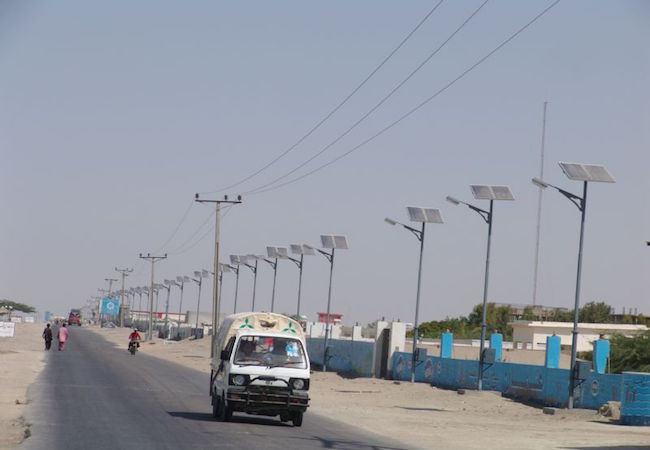
By Qura tul ain Hafeez
Poverty and health always go side by side. It’s very obvious that the poor will always try to adapt the cheap means of to fulfill its needs. He will use those resources which are easily available to him and same is the case with Pakistan. China-Pakistan Economic Corridor (CPEC) has perhaps become the most talked about event in Pakistan and has been deemed as an economic anthem of the country far it is a toll for boosting the economy keeping in lines the international consensus on Climate Change. CPEC appears to be an absolute development and Environment friendly package in energy sector and will be a boon for Pakistan’s crippling economy. It envisages various road, railway, energy, infrastructure and industrial projects.
Substantially, in order to meet the energy crises Pakistan has stated various energy projects and coal power plants are one of them. In Sindh the CPEC is starting additional energy projects compared to any other province of Pakistan. Coal power plants in the area of Thar are being constructed. Thar-I coal power plant with 6600 MW and Thar-II coal power plant (consists of two power plants each of 330MW) will be using the indigenously produced coal through local coal mines. According to an estimate these local coal mines will be providing 3.8 million tons of coal on yearly basis. Port Qasim coal power plant is another coal based power plant constructed in Sindh worth of $2billion.Moreover in Sahiwal acoal power project of 1320MW is to be built as well along with the project of a coal mine of $589 million. A 330 MW of coal plant will also be launched in Punjab Salt Range and in Baluchistan at Hub and Gwadar; coal power plants of 660 MW and 300MW will be constructed respectively, to meet the energy demands
However due to such a huge investment for the energy projects, a major concern is the possible impact on environment sustainability and climate change. It is being argued that it will introduce a new set of problems because the coal power plants are considered to be one of the major contributors to greenhouse gases, which cause global warming. This is also being said that these projects ignore the aspect of an Environmental Impact Assessment (EIA). Although Pakistan is responsible for a mere 0.43% of global greenhouse gas emissions, but it is among the world’s 10-most vulnerable countries to climate change. Moreover it can cause significant damage to the eco tourism and glaciers, which are diminishing due to expanded infrastructure. The wild life of the region could also be affected with changing natural landscapes. These are some of the impacts which should not be taken lightly.
Poverty has direct relation with environmental degradation and climate change because people use the cheap resources. However CPEC is not just about the energy generation projects but the concerned authorities have also considered the best means to considerably reduce the environmental damage. It has been formally agreed that one should not completely take for granted the impact of carbon foot print on the echo system. Unfortunately, coal use has attracted a lot of criticism due to its environmental impact. Analysis shows that Pakistan’s energy mix contain a minimum share of coal is and it will remain less despite the investment in new coal fired power plants. It is pertinent to note that the developed economies like USA, Germany, Poland, etc are still at the forefront in carbon foot print then Pakistan. Furthermore, for Pakistan, it is important to overcome the problem of energy crisis and invest in renewable energy.
Both China and Pakistan are well conscious of the fact that these harmful externalities which this lignite coal possesses should not be ignored and decided to offset the impact by focusing more on renewable energy projects. It is explicitly explained in the Long Term Plan (LTP) that renewable energy sector will be the major area of investment in future. The Federal Minister for Power Division, Sardar Awais Ahmed Khan Leghari has proposed to establish a renewable energy institute in the country which is a good step for controlling the carbon foot prints. It also promises to bridge the energy gap by constructing numerous hydro, solar, wind power and Liquefied Natural Gas (LNG) projects to reduce the green house emission.
Augmenting the share of renewable energy in power projects would also address the gaping disparity between the Pakistan and global leaders in the realm. In order to sustain the energy need and keeping in mind the climate effects the CPEC energy projects not only engage in generating power from coal but focus on other renewable sources of energy such as hydroelectric power for which Pakistan has a huge potential. For this a hydro power plant Suki Kinari with total capacity 870MW worth US $1802 Milionn to be constructed in Mansehra district of KPK. On 10th of January, 2016 construction of another hydropower plant famously known as “Karot Hydropower Plant” was on track. This US $1420 Million power plant will be finished by the year 2020 and will be able to produce 720 MW of power from river Jhelum. Only these hydropower projects altogether will produce 7190 MW of electricity.
Similarly the CPEC places solar and wind energyprojects on the forefront to avoid the green house emission effect as they not only produce cheap electricity but are also better for the environment and are more sustainable in the long run.In the idea is to come up with the best possible options to fulfill the requirement of energy. Quaid-e-Azam Solar Park in Bahawalpur (US $1302 Million) is a 1,000 MW. solar energy generating plant whose first phase was completed by the year 2015 and the second phase will be completed by the end of year 2016.The commercial operation date (COD) of 300 MW was attained in August 2016.
To further overcome the coal emissions wind power plant at Jhimpir is constructed. It is producing 50 MW of electricity by wind power and another plant of 100 MW is likely to produce electricity through wind power with a cost of US $250 million through the CPEC.
Moreover it is pertinent to mention here that pakistan has planned some LNG energy projects planned to be carried out as part of the CPEC project. Among the LNG projects under CPEC, a 711KM long gas pipe line isto be built which will provide 1 billion cubic feet of LNG per day. The total cost of this project will be $2.5 billion. Along with reducing the carbon emission this project will not only supply gas to Pakistan but China will also get benefit from this project for its trade activities.
This is a known fact that China has adapted strict measures and it has developed a network of 1500 air quality monitoring stations in over 900 cities to control air pollution. Likewise to further make CPEC an environment friendly Pakistan and China can jointly collaborate on green house trading mechanism, this will offset environmental cost of carbon emission in Pakistan. However, it has also been stated in the LTP of CPEC, that China will also help Pakistan excel in the production of renewable energy related technologies. One can hope that, under global scrutiny, and for all that it promises in Paris agreement Pakistan is firmly committed to the purposes and objectives of the Climate Convention thus Making CPEC and environment friendly project.
Qura tul ain Hafeez has an M Phil in international relations from Quaid-I Azam University Islamabad. She currently works as a researcher at Strategic Vision Institute in Islamabad. Her domain of work include China as an emerging global power, Sino-Pakistan strategic and civil nuclear relations, South Asian strategic issues, regional integration, nuclear issues including nuclear non-proliferation and NSG, foreign policy analysis, and international politics.




